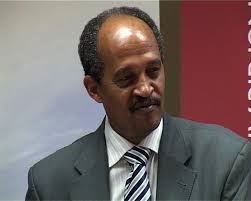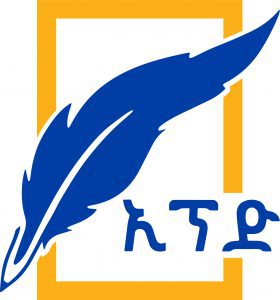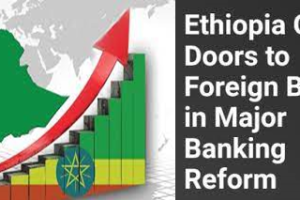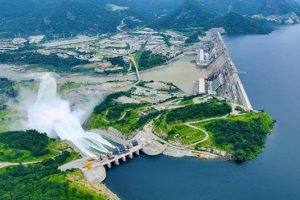
Ethiopia, Egypt and Sudan have been discussing, bilaterally or trilaterally negotiating about the issues revolving around Abbay water utilization and the Grand Abbay Dam since 2nd April, 2011 (2003 E.C). The close talks, relevant discussions and even negotiations have accounted for solid 14 years. Ethiopia has been represented by its prestigious sons for the negotiation and they have been carrying out activities in a tough situation tantamount to a serious fight at the battle field. These negotiators have become triumphant over their challengers and come up with untold victory in that regard.
Yes, Ethiopia is on the edge of significantly enhancing its electricity generation capacity, with the construction of five major power projects, prominently featuring the Grand Ethiopian Renaissance Dam (GERD).
Today marks the 14th commemorate of the Grand Ethiopian Renaissance Dam, a transformative project that symbolizes Ethiopia’s commitment to enhancing energy production, fostering regional electrification and driving power cooperation across East Africa.
This grand dam represents a transformative project in Ethiopia’s pursuit of energy independence and economic growth. As the largest hydroelectric dam in Africa, GERD has the potential to generate over 6,450 megawatts of electricity, significantly boosting the nation’s energy capacity, according to government data.
The availability of reliable and affordable electricity is crucial for industrial growth. With GERD’s output, various sectors including manufacturing, agriculture, and services will benefit from improved energy access. This will enable industries to operate more efficiently, innovate, and expand, ultimately leading to job creation and economic diversification.
This dam is set to produce a vast amount of electricity, greatly improving the energy supply within the country. The increase in available energy will not only benefit Ethiopian households but is also expected to attract foreign investments, which are crucial for creating jobs and diversifying the economy.

The GERD has become a basis of Ethiopia’s energy framework, providing a vital source of domestic power and serving as a catalyst for energy cooperation across the region.
In a recent address to the House of People’s Representatives, Prime Minister Abiy Ahmed (PhD) mentioned that the dam’s impressive capacity to hold 74 billion cubic meters of water, a crucial resource for generating electricity. He noted that the GERD is a vital component of Ethiopia’s vision for electrification, Industry development as we as energy security.
Hydro politics instructor at Addis Ababa University and one of the Nile waters negotiators, Yacob Arsano (Assistant Professor) said that the negotiation to well construct the dam has been handled and has become fruitful as it was scrupulously investigated and wisely handled.
Reminding how the negotiation started, they have agreed that from the very day that constructing the dam is Ethiopia’s full right. Hence, they came to the podium to negotiate underlining that no other country’s grant, assistance or influence can interfere at all.
According to The Ethiopian Electric Power data shows that the plans to increase electricity access coverage from the current 54% to 78% in the next five years. Once fully operational, the GERD generated electricity will facilitate industrialization, enhance productivity, and attract foreign investment. By reducing reliance on fossil fuels, GERD aligns with global sustainability goals and contributes to a cleaner environment.
This Mega project not only aims to meet domestic energy demands but also seeks to export surplus electricity to neighboring countries, fostering regional cooperation and economic development.
Beyond national benefits, GERD opens avenues for regional cooperation in energy trade. By exporting surplus electricity to neighboring countries, Ethiopia can foster economic ties and support regional stability. This collaboration can enhance energy security across the East African region countries like Sudan, Tanzania, Kenya, and Djibouti, promoting collective growth.
He said, “We were seriously arguing that Ethiopia’s right to construct grand dam on the Abbay River could never be inhibited and compromised by any country, be it Egypt or any other one. Thus not only does the negotiation focus on respecting Ethiopia’s right to construct its own dam but it also protects the nation not to be influenced by others.
As to him, the negotiating members have taken long time for carefully discussing all rounded aspects as the other parties had concluded that Ethiopia could never do anything whenever it is under influence. They have come up with fruitful essences after talking about many dimensions organizing relevant data, information and even the context of the negotiation itself for a long period of time.
Needless to state, the Dam is expected to play a pivotal role in alleviating poverty in neighboring countries while promoting peace and development in the region. As the dam’s construction nears completion, its anticipated benefits extend far beyond just power generation.
According some Experts mentioned that the mega project represents a transformative opportunity for Ethiopia, lifting its citizens from poverty into prosperity and illuminating lives that have long been masked in darkness.
The dam could also foster collaboration among regional nations, paving the way for enduring peace and sustainable development throughout East Africa. Ethiopia’s abundant water resources, if harnessed effectively, could position the nation as a major hub for electricity distribution across Africa and the Middle East.
True, the GERD is likely to generate positive ripple effects in sectors such as tourism and agriculture. The construction of the dam has already attracted investors eager to tap into opportunities that could lead to a thriving tourism industry and agricultural growth.
Additionally, the improved water management enabled by the GERD is expected to enhance agricultural productivity, which is essential for food security and rural development.
For over a decade, Ethiopia has faced significant hurdles in constructing the Grand Ethiopian Renaissance Dam, largely due to opposition from Egypt. Despite these challenges, the resilience and determination of the Ethiopian people and leadership have brought the project to the brink of completion.
On the diplomatic front, through addressing shared water resource challenges, the dam can serve as a platform for peace and mutual benefit, ultimately contributing to a more stable and prosperous East Africa.
Moreover, the successful initiation of the third and fourth turbines reinforces Ethiopia’s commitment to sustainable electric energy development. By promoting renewable hydropower, the GERD can contribute to a cleaner and more sustainable energy future for the entire region.
The introduction of the fifth turbine is expected to bolster energy production, not only enhancing power utility within Ethiopia but also increasing energy integration with neighboring countries.
With the introduction of new turbines, the dam’s total electricity generation capacity is set to increase, establishing Ethiopia as a regional leader in renewable energy production. This development encourages stronger energy cooperation with neighboring countries, fostering both energy interdependence and regional stability.
Additionally, the project has created jobs and improved living standards for millions of Ethiopians. As the nation continues to invest in its infrastructure, the GERD symbolizes hope for a brighter, more prosperous future for Ethiopia and its neighbors.
The Government data indicated that the dam holds immense potential to serve as a cornerstone for both Ethiopia’s economic development and regional integration. Hydropower generation is critical to fulfilling the nation’s domestic energy needs. Looking beyond Ethiopia’s borders, the GERD serves as a bridge for regional economic and energy cooperation.
The GERD is not just a source of clean energy; it also serves as a model for large-scale infrastructure projects that prioritize environmental sustainability.
This ambitious initiative is part of a broader strategy to enhance energy infrastructure, expected to play a significant role in realizing the African Union’s Agenda 2063, which aims to improve connectivity across the continent through robust infrastructure development.
Beyond its immediate benefits, the GERD is reshaping Ethiopia’s energy landscape, providing essential electricity to millions and supporting the nation’s growth. The dam is not merely a construction project; it embodies hope for economic prosperity and social upliftment, representing the aspirations of Ethiopians for progress in the face of various challenges throughout the region.
Also, with its vast potential to transform the energy landscape, the GERD is not only a significant milestone for Ethiopia but also a beacon of hope for a more sustainable and prosperous future for East Africa.
BY FIKADU BELAY
THE ETHIOPIAN HERALD WEDNESDAY 2 APRIL 2025





